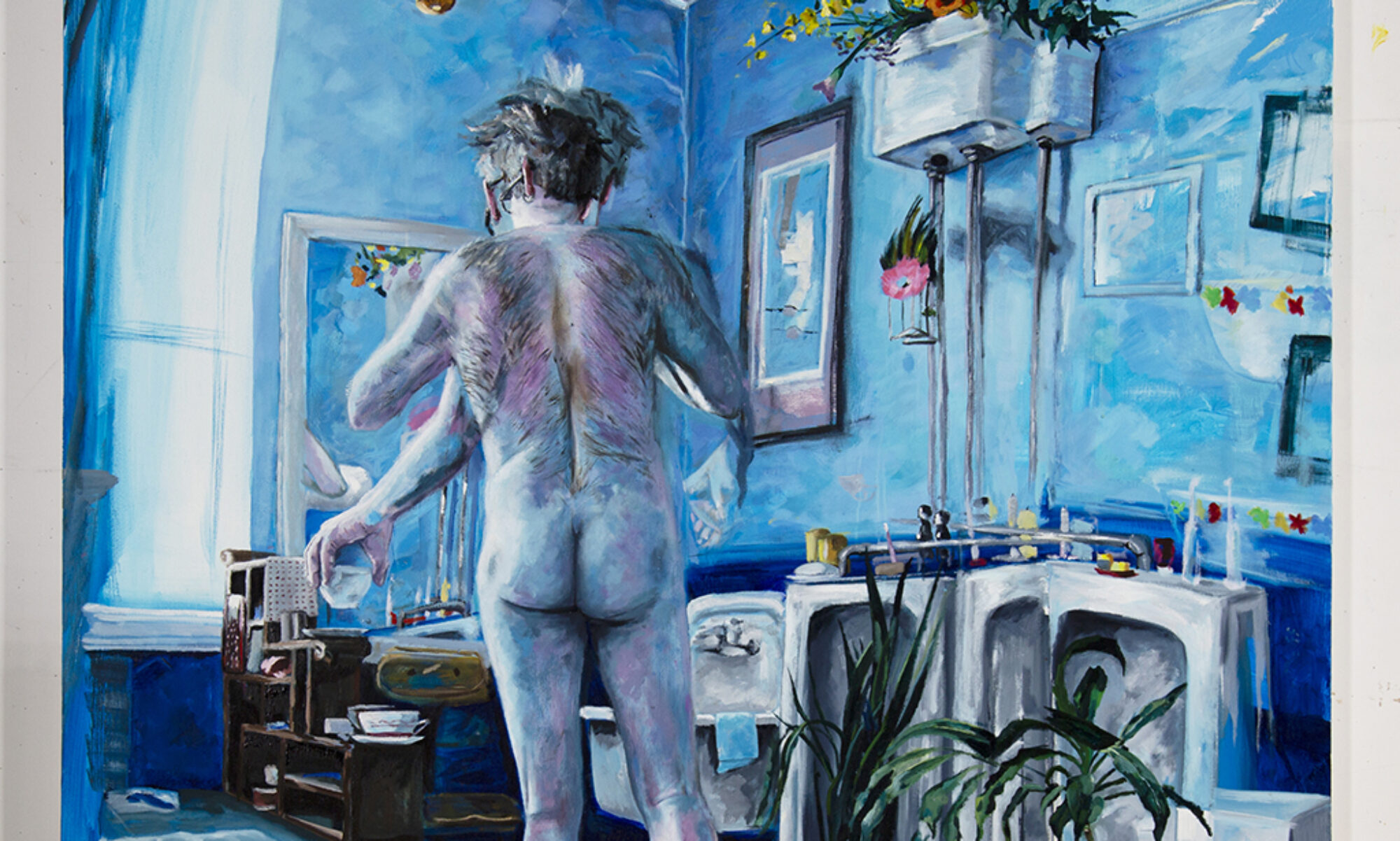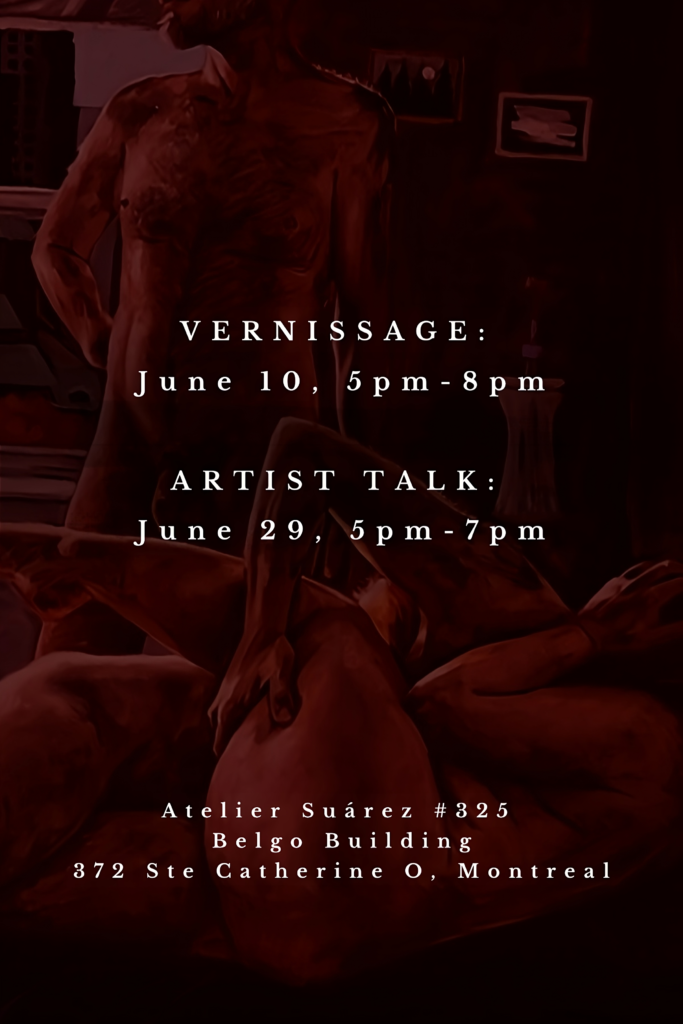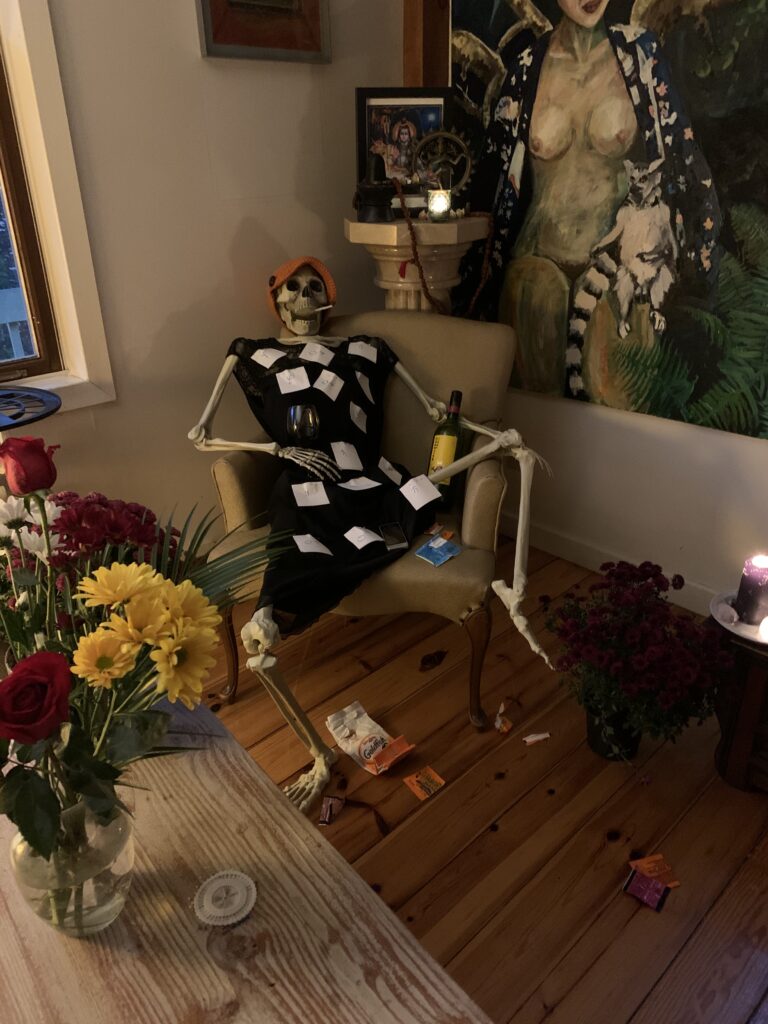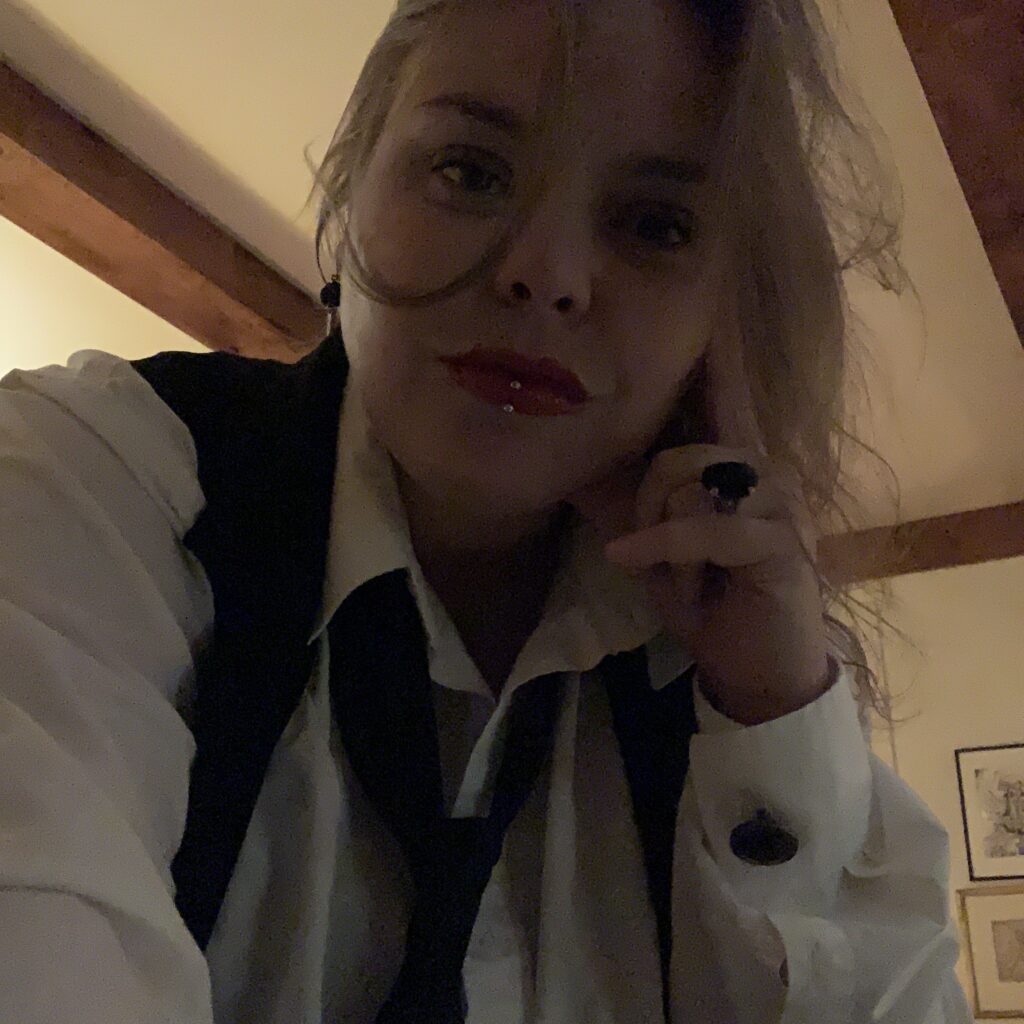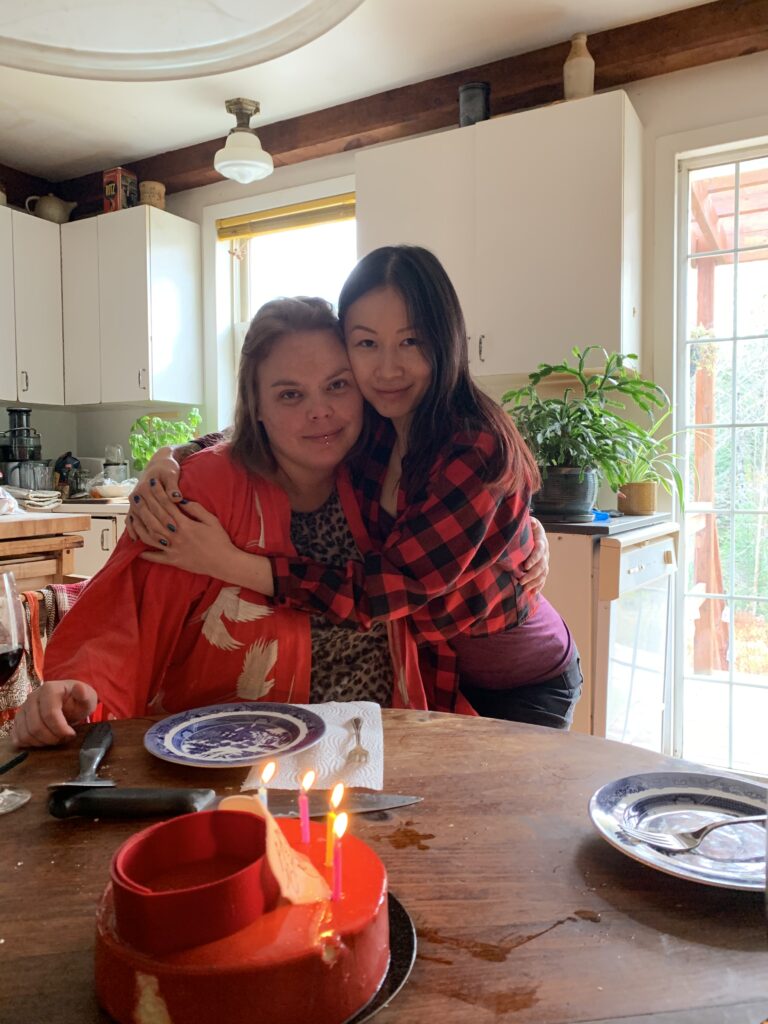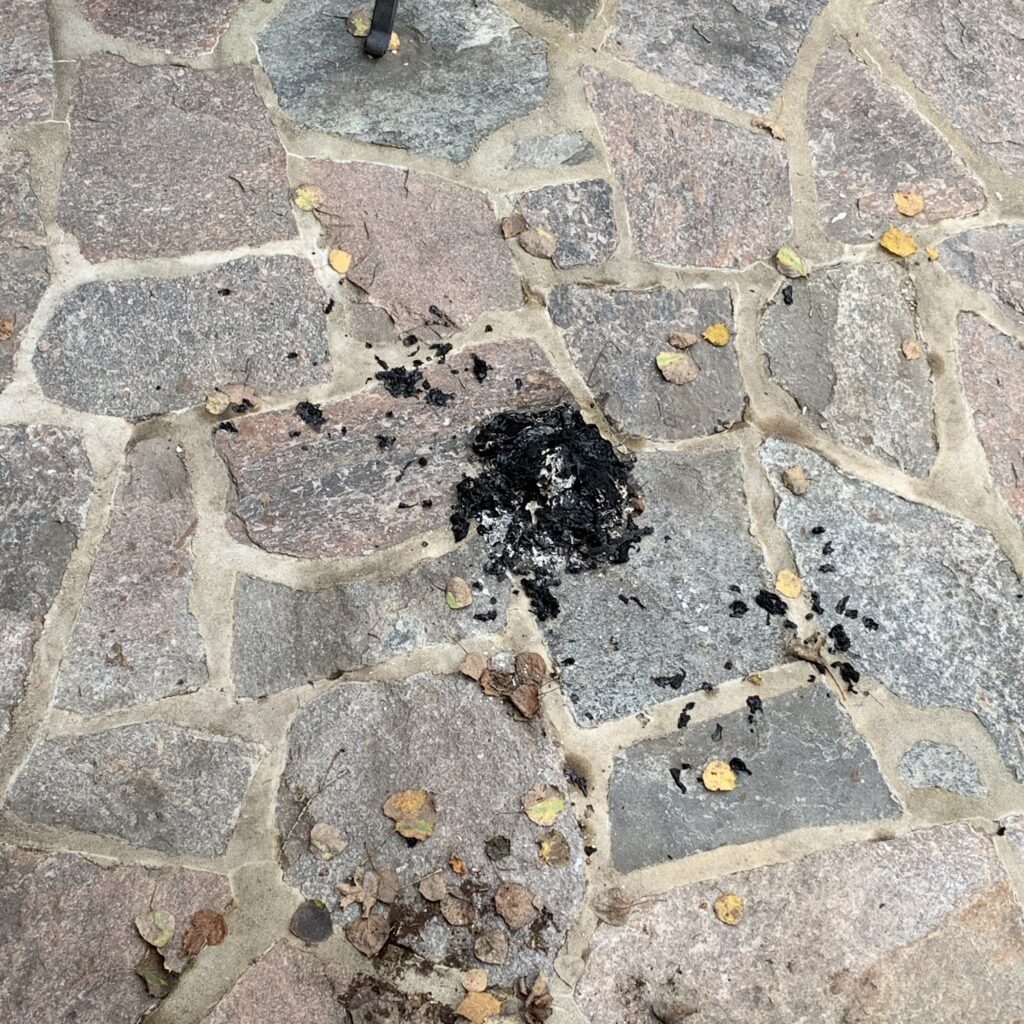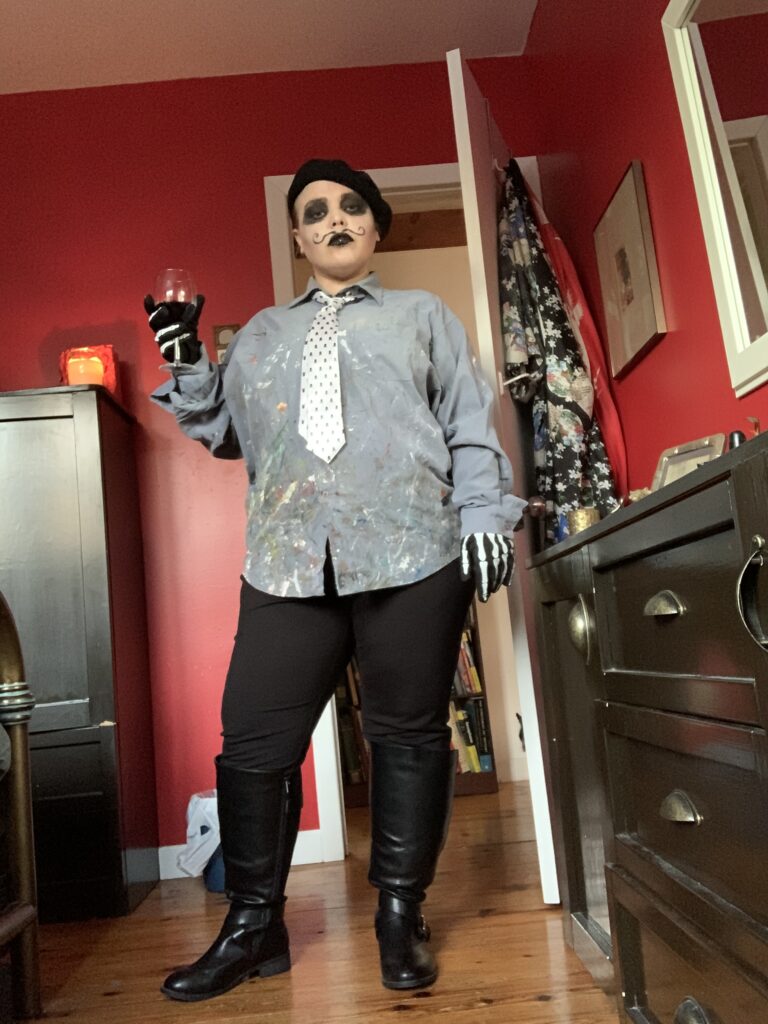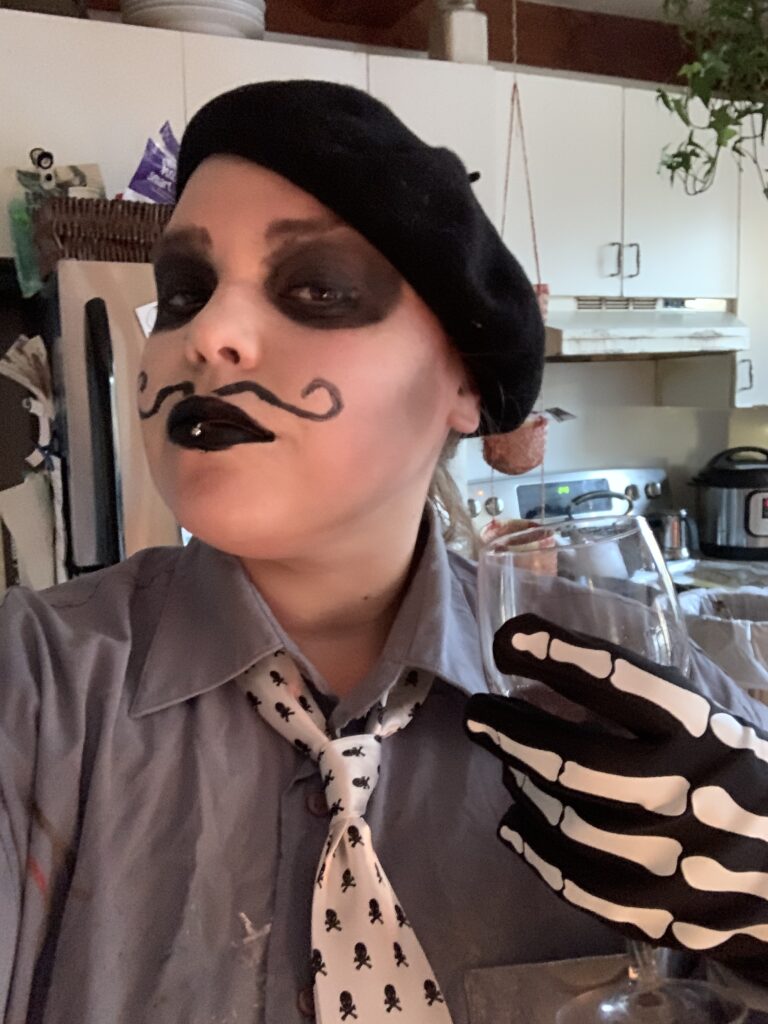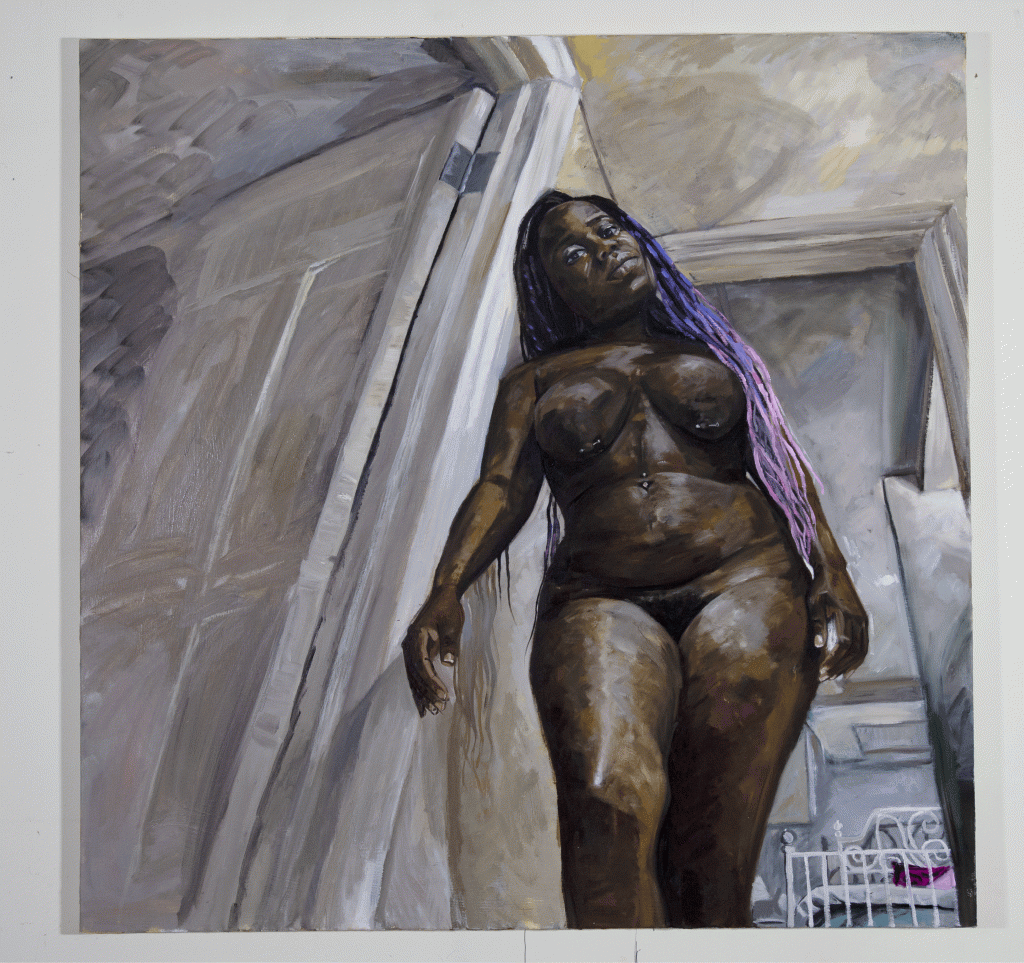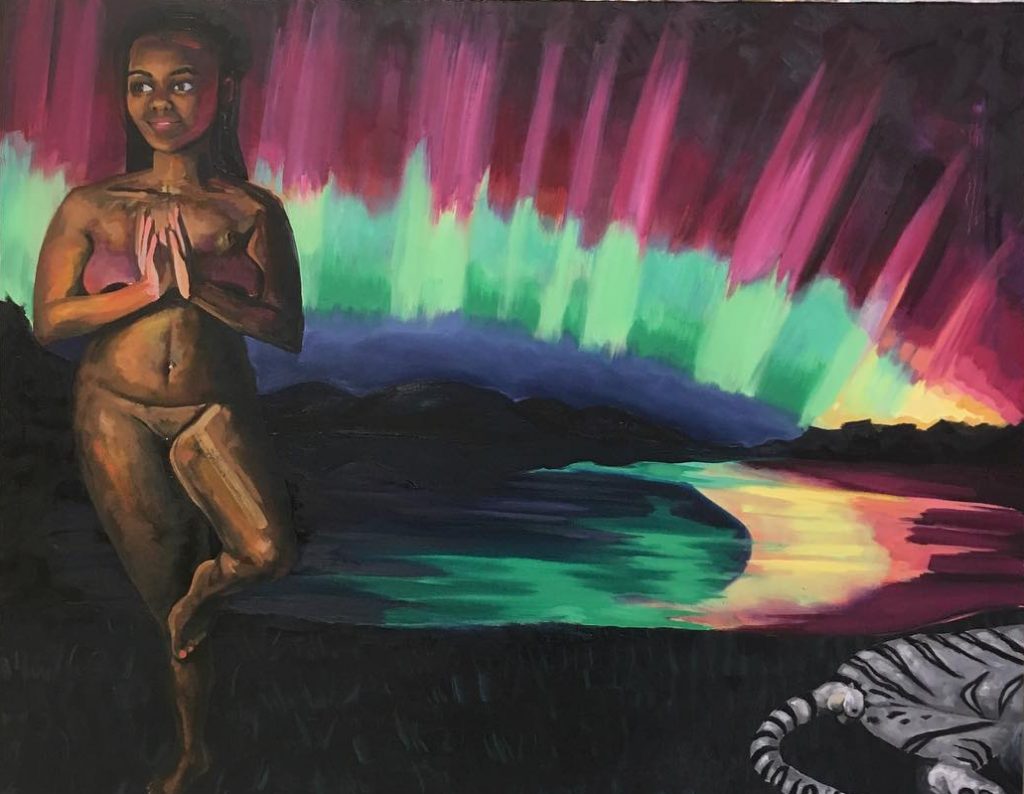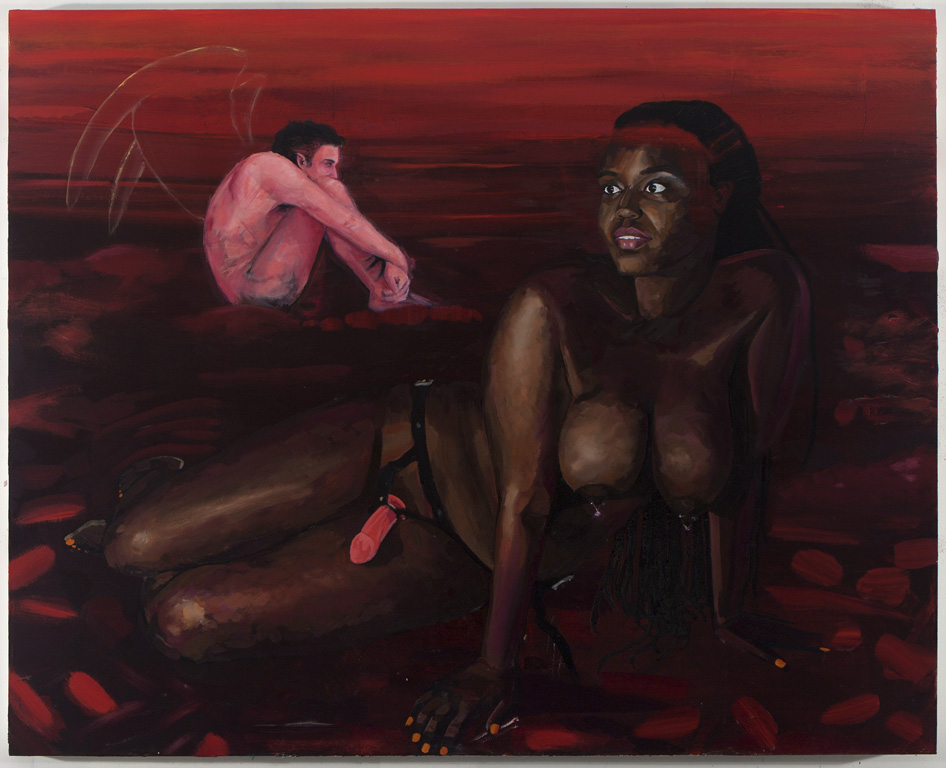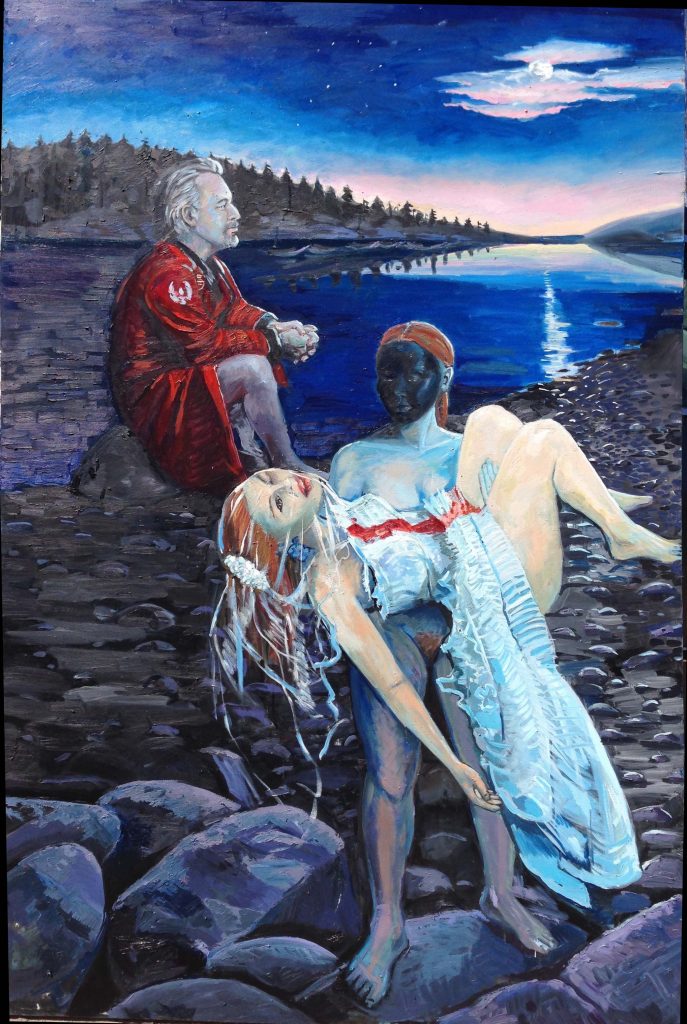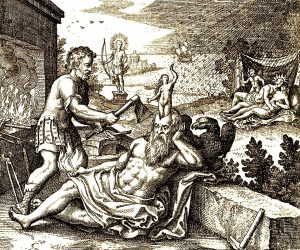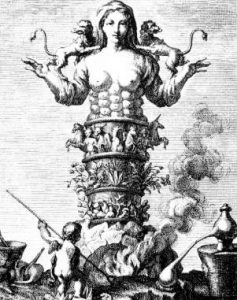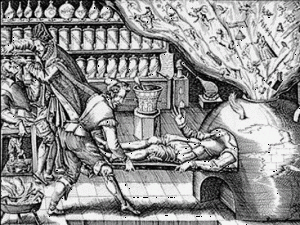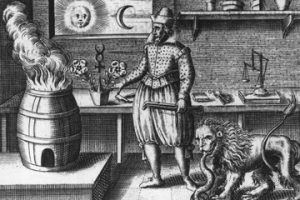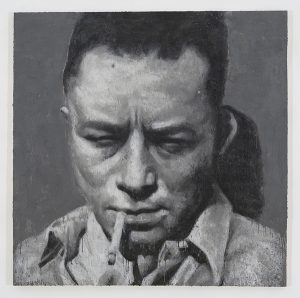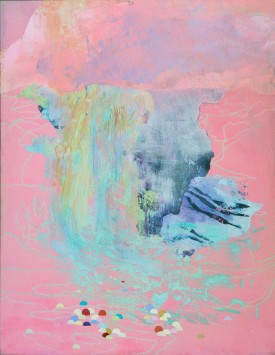Come join me for my first Montreal solo exhibition this Saturday from 5pm to 7pm, at the Belgo Building in Montreal, #325. I will be sitting the gallery from Wednesday to Saturday, 12-6 until July 15. If you will miss the vernissage, there is an artist talk on Friday, June 29, from 5pm to 7pm where I will discuss my painting practice and erotic works with Liza Sokolovskaya and you can join the discussion as well.
Here is the exhibition text in English and Français suivant.
What For My Maddened Heart I Most Was Longing is an exploration of the erotic in paint spanning 20 years of art making. Mining her unconventional relationships with partners, lovers, and friends, Kara Eckler’s work is autobiographical as well as mystical, and strains of her experiences with spirituality, namely Tantra, witchcraft, and sex magic, permeate many of her works. These works have threads of the sacred running through them as well as the profane. To Eckler, these experiences are not on a polarity, what is considered vulgar and shameful to many can be holy to others, and what is considered estimable and lofty to some, is loathsome to others. In tantric philosophy all of life comes from the divine source, so the world, the body, and sexuality are as sacred as spirit.
Sexuality is a thread that has long intrigued the artist in terms of the relationship between the body and pleasure, the bestial and the celestial. In this exhibition, glimpses of the influence of various sexual subcultures on Eckler’s life and oeuvre can be seen. Questions about the nature of the self are addressed in works which feature doubling of the figure with either doppelgängers or other roles being played, such as the schoolgirl or the harlot. In these ways, Eckler has explored various self-portrayals in her pornography as a muse, but in painting, as the creator. Issues of power, either the exploration of it through sex play, or the loss or gain of it, can be found in various roles ranging from dominant to submissive.
The works in this show touch on Eckler’s interest in looking and seeing, with glimpses of screens and televisions being found. Hints of digital effects or glitches appear, creating a sense of the viewer being unhinged from the normal grasp of reality and time as a fixed thing. Using the self as a starting point of inquiry is a common practice among artists, amateur porn creators, and spiritual practitioners. Beyond the masks our society expects us to wear, do we know ourselves? Who are we when we are not acting for others?
Eckler’s personal relationships have long been blurred, with many of her lovers, friends, and partners featuring in videos with her and often posing for paintings as well. From this culling of content from her work and personal life, she creates scenes to paints, sometimes collaging multiple images together. People may be in our lives for years, or just for one moment, and the artist aims to infuse these paintings with the magic which is felt but perhaps not seen. Her works often give a sense of heightened reality, where our senses are alive, and colours seem brighter, and life burns more luminous than normal.
Quel désir ardent travaillait mon cœur
insensé
Exposition personnelle de Kara Eckler
Quel désir ardent travaillait mon cœur insensé est une exploration de l’érotisme dans la peinture couvrant 20 ans de création artistique. Exploitant ses relations non conventionnelles avec des partenaires, des amants et des amis, l’œuvre de Kara Eckler est à la fois autobiographique et mystique, et des souches de ses expériences avec la spiritualité, à savoir le tantra, la sorcellerie et la magie sexuelle, imprègnent nombre de ses œuvres. Ces œuvres ont des fils du sacré les traversant, ainsi que du profane. Pour Eckler, ces expériences ne sont pas restreintes à une polarité; ce qui est considéré comme vulgaire et honteux pour beaucoup peut être saint pour d’autres, et ce qui est considéré comme estimable et noble pour certains, est répugnant pour d’autres. Dans la philosophie tantrique, toute la vie provient de la source divine, de sorte que le monde, le corps et la sexualité sont aussi sacrés que l’esprit.
La sexualité est un fil qui a longtemps intrigué l’artiste quant au rapport entre le corps et le plaisir, le bestial et le céleste. Cette exposition donne un aperçu de l’influence de diverses sous-cultures sexuelles sur la vie et l’œuvre d’Eckler. Les questions sur la nature de soi sont abordées à travers d’œuvres qui présentent le doublement de la figure avec des sosies ou d’autres rôles joués, comme l’écolière ou la prostituée. De cette manière, Eckler a exploré diverses auto-représentations dans sa pornographie en tant que muse, mais en peinture, en tant que créatrice. Les questions de pouvoir, soit son exploration par le jeu sexuel, soit sa perte ou son gain, peuvent être trouvées dans divers rôles allant de dominant à soumis.
Les œuvres de cette exposition évoquent l’intérêt d’Eckler pour regarder et voir, contenant des aperçus d’écrans et de téléviseurs. Des indices d’effets numériques ou de pépins techniques apparaissent, donnant l’impression que le spectateur est déconnecté de la compréhension normale de la réalité et du temps en tant que chose fixe. L’utilisation de soi comme point de départ de l’enquête est une pratique courante chez les artistes, les créateurs de porno amateur et les praticiens spirituels. Au-delà des masques que notre société nous impose, nous connaissons-nous ? Qui sommes-nous quand nous n’agissons pas pour les autres ?
Les relations personnelles d’Eckler ont longtemps été floues, beaucoup de ses amants, amis et partenaires figurant dans des vidéos avec elle et posant souvent aussi pour des tableaux. À partir de cette sélection de contenu extrait de son oeuvre et de sa vie personnelle, elle crée des scènes à peindre, en assemblant parfois ensemble plusieurs images. Les gens peuvent rester dans nos vies pendant des années, ou juste pour un instant, et l’artiste vise à insuffler à ces peintures la magie ressentie mais peut-être pas aperçue. Ses œuvres évoquent souvent un sentiment de réalité accrue, où nos sens sont vivants, les couleurs semblent plus brillantes, et la vie brûle plus lumineuse que la normale.
